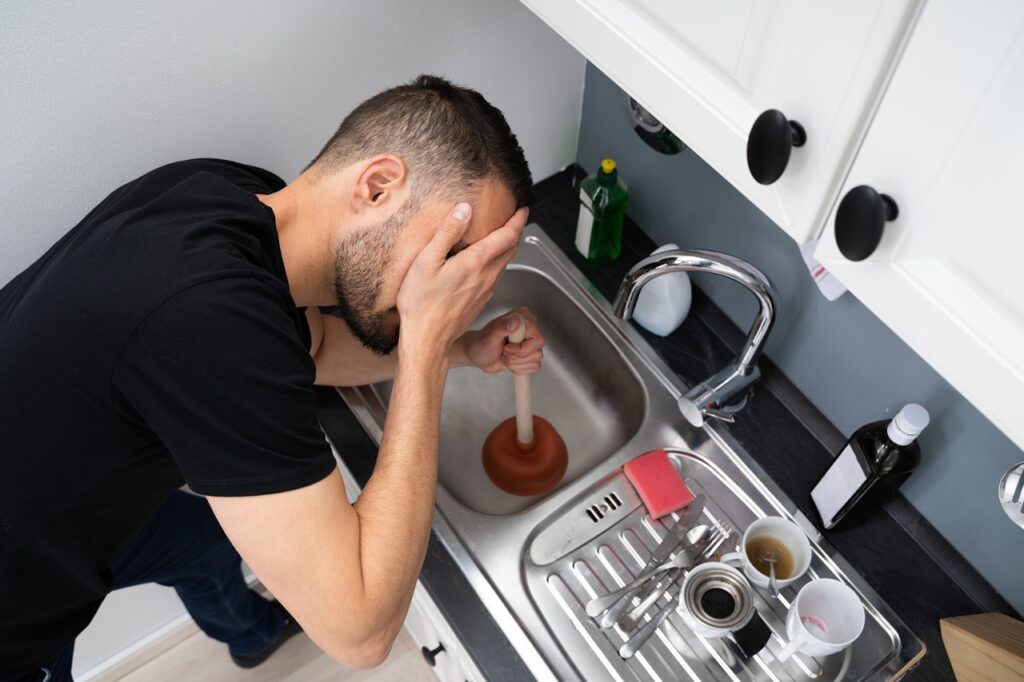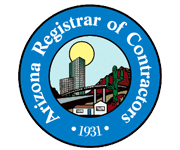Behind the Walls: How Plumbing Materials from Past Decades Are Still Affecting Your Home
If your house was built before the 2000s, there’s a pretty good chance your plumbing system includes pipes that were once considered “modern” but have since proven to be anything but. They’re often out of sight, buried behind walls and under floors, so they’re easy to forget about, until something starts to leak, clog, or rust.

In Goodyear and across the Greater Phoenix area, where many homes were built decades ago, outdated plumbing materials are still creating problems today. These aren’t just small annoyances, they can mean serious water damage, mold growth, costly repairs, and even potential health issues. And the worst part? Most homeowners have no idea their plumbing system is a ticking time bomb.
Let’s take a closer look at what might be hiding behind your walls and how it could be impacting your home today.
The Pipes That Time Forgot: What’s Still Lurking in Older Homes
Not all pipes are created equal. Over the years, builders have used different materials depending on what was cheap, popular, or just standard for the time. But a lot of those materials haven’t held up.
Here are some of the usual suspects we still find in homes:
- Galvanized steel – These were commonly used up until the 1960s. The problem? They rust from the inside out. That leads to dirty, discolored water and restricted water flow. Worst-case scenario, they break without warning.
- Polybutylene (PB) – Used a lot in the ’70s through the ’90s, these gray plastic pipes looked like a great invention at the time. But they degrade when exposed to water disinfectants and often fail without signs of stress. A hidden leak behind drywall? That’s a PB specialty.
- Old copper – Copper isn’t bad in itself, but pipes installed decades ago are often thin-walled and can corrode from the inside, especially if your home has hard water. You may notice pinhole leaks, green stains under sinks, or mystery drips.
- Lead – If your home predates the 1950s, there might be lead pipes or lead solder still in use. This is not just a plumbing issue, it’s a health hazard. Lead leaches into drinking water and is especially dangerous for kids and pregnant women.
- Cast iron – Mostly used for drains and sewer lines. While strong, cast iron rusts over time and can develop rough patches inside the pipe, slowing water flow or causing backups.
If your home has any of these, you’re not alone. They’re common in older neighborhoods throughout Goodyear and surrounding areas.
How Do You Know If Old Pipes Are Causing Trouble?
The signs aren’t always dramatic. A burst pipe might get your attention, sure, but smaller, slower problems usually show up first. It’s often a collection of things that don’t quite feel right:
- Water that smells metallic or tastes funny
- Low water pressure, especially in upstairs bathrooms or at the kitchen sink
- Water that comes out brown or yellow after sitting in the pipes overnight
- Pipe joints that feel damp or leave rust marks under sinks
- Slow drains, especially when more than one sink or shower is involved
- Odd noises from the pipes, like whistling, banging, or gurgling
Sometimes these issues are written off as “old house quirks,” but most of the time they’re warning signs. Pipes may be corroding, clogged with buildup, or worse, getting ready to fail.
Why These Problems Matter More Than You Think
It’s easy to assume that if something isn’t leaking, it’s fine. But old plumbing materials can cause more than just plumbing issues.
- Water quality drops – Corroded pipes can introduce rust, sediment, and even bacteria into your water supply.
- Water pressure drops – As minerals build up inside older pipes, the inner diameter gets smaller and smaller. That means weaker showers and slower fill times for appliances.
- Repair costs add up – Fixing one leak after another may seem like a temporary solution, but those repair bills add up fast. Replacing sections of pipe one by one is often more expensive in the long run than a full repipe.
- Property damage risk increases – A hidden leak behind a wall or under a slab doesn’t just ruin drywall. It can invite mold, weaken your foundation, and ruin your flooring. Insurance might help once, but if the cause is old materials, they may not help again.
What Materials Should Your Home Have Instead?
Modern plumbing systems today are built to last longer, hold up against hard water, and reduce contamination risks. If you’re upgrading or doing major renovations, these are the materials to ask about:
- PEX (cross-linked polyethylene) – Flexible, resistant to scale and chlorine, and won’t corrode. PEX is now one of the most common materials in new builds and retrofits.
- CPVC – A strong plastic option that resists heat well, making it suitable for both hot and cold water lines. It’s also less likely to leach anything into your water supply.
- Type L copper – Still used today, but thicker than older versions. Great when installed properly and maintained in the right water conditions.
Any professional plumber working in Goodyear or the Greater Phoenix area will be familiar with the right materials for the climate, water quality, and building codes.
Problems We Commonly Solve in Goodyear and the Greater Phoenix Area
Here’s what we regularly see behind walls and under floors across the region:
- Discolored or rusty tap water
- Slab leaks from failing polybutylene or corroded copper lines
- Low pressure in homes built before the 90s
- Water damage behind bathroom walls
- Repeated pinhole leaks in old copper plumbing
- Sewer backups caused by deteriorating cast iron pipes
- Health concerns tied to lead-soldered joints
- Patchwork plumbing “repairs” that only made things worse
These aren’t one-off issues, they’re frequent and familiar. We know where to look and how to spot trouble early, even before it shows on the surface.
When Should You Act?
If your house was built before the early 2000s and you haven’t had a plumbing inspection in years, it’s probably time. You don’t have to rip out everything at once. A good plumber can assess your system, help you prioritize the most at-risk areas, and give you a plan that works within your budget and timeline.
You can’t see through walls, but we can.
If your home has signs of aging plumbing or you’re unsure what’s behind your walls, A Quality HVAC and Plumbing Services LLC is here to help. Call us at 623-853-1482 for honest answers and trusted plumbing solutions in Goodyear and the Greater Phoenix, AZ area.






